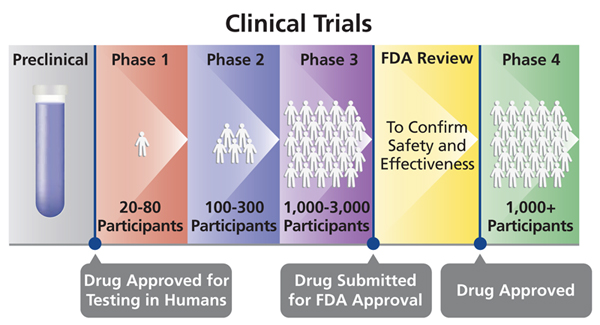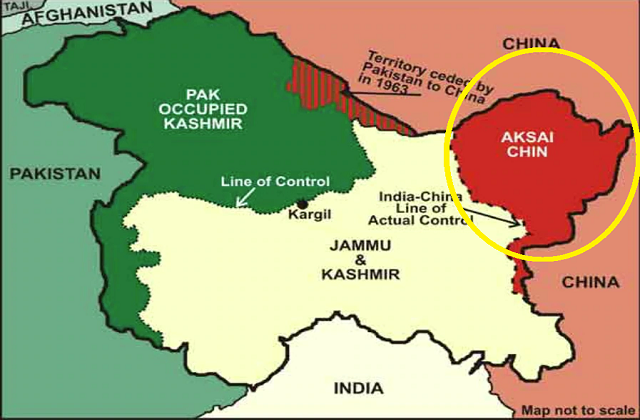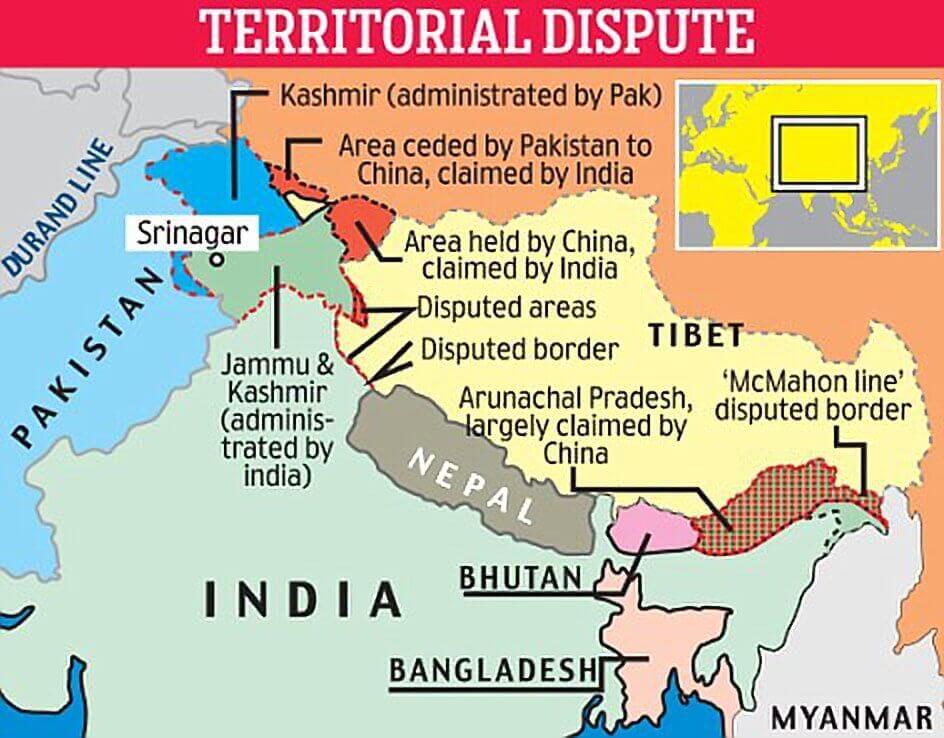Contents
- Potential Oxford vaccine fails to prevent coronavirus
- 1st case of COVID inflammatory syndrome in TN
- J&K notifies amended domicile certificate rules
- Call for WHO probe into virus origin
- India building illegal def posts in Aksai: China
- USAID to fund 200 ventilators for India
- Super Cyclone Amphan
POTENTIAL OXFORD VACCINE FAILS TO PREVENT CORONAVIRUS
Focus: GS-III Science and Technology
Why in news?
A high-profile potential vaccine for COVID-19 being tested by researchers at Oxford University failed to protect vaccinated monkeys from being infected by the nCoV-2 virus.
On a positive side, the test animals appeared to be protected from pneumonia.
Details
The vaccine candidate: ChAdOx1 nCoV-19 – is a weakened form a common cold virus (adenovirus) that affects chimpanzees but has been neutered to prevent replication in humans.
Virus specific neutralising antibodies were detected in those macaques vaccinated and no such antibodies were seen in those that didn’t get the vaccine.
Taking it to the Human trials
Based on these results 1,110 people are taking part in human trial, half receiving the vaccine and the other half (the control group) receiving a meningitis vaccine.
The dose of the vaccine was half that of what is being used for humans right now.
What are Clinical trials?
Clinical trials or Human Trials are experimental studies on human participants that helps to determine the safety concerns, effectivity and potency of a particular treatment (drugs, vaccines, dietary supplements, dietary choices, medical devices, etc.)
While preclinical research answers basic questions about a drug’s safety, it is not a substitute for studies of ways the drug will interact with the human body – Hence, Clinical Trials are very important in understanding the effects of administering a particular treatment.
Human Clinical Trial Phases
Preclinical Phase (Phase 0)
- Drug and device testing begin with extensive laboratory research which can involve years of experiments in animals and human cells.
- If the initial laboratory research is successful, researches send the data to the Food and Drug Administration (FDA) for approval to continue research and testing in humans.
- Once approved, human testing of experimental drugs and devices can begin and is typically conducted in four phases.

Phase I
- Phase I studies assess the safety of a drug or device. Usually includes a small number of healthy volunteers (20 to 100).
- The study is designed to determine the effects of the drug or device on humans including how it is absorbed, metabolized, and excreted.
- This phase also investigates the side effects that occur as dosage levels are increased.
Phase II
- Phase II studies test the efficacy of a drug or device. Involves up to several hundred patients.
- Most phase II studies are randomized trials where one group of patients receives the experimental drug, while a second “control” group receives a standard treatment or placebo.
- Often these studies are “blinded” which means that neither the patients nor the researchers know who has received the experimental drug.
Phase III
- Phase III studies involve randomized and blind testing in several hundred to several thousand patients. This large-scale testing, which can last several years.
- Once Phase III is complete, a pharmaceutical company can request FDA approval for marketing the drug.
Phase IV
- Phase IV studies, often called Post Marketing Surveillance Trials, are conducted after a drug or device has been approved for consumer sale.
- Phase IV studies can result in a drug or device being taken off the market or restrictions of use could be placed.
-Source: The Hindu
1ST CASE OF COVID INFLAMMATORY SYNDROME IN TN
Focus: GS-III Science and Technology
Why in news?
- An eight-year-old boy from Chennai has become India’s first case of acute illness because of hyper-inflammatory syndrome associated with the coronavirus disease.
- This syndrome describes inflammation in the entire body, including vital organs, which leads to multiorgan failure and shock.
- There have also been reports of similar cases from the U.S. and in London.
- Available data says the disease is generally milder in children and adolescents compared with adults.
- The World Health Organization (WHO) has created a working group of experts from all over the world to begin investigating cases to establish evidence on whether Covid-19 can lead to multiorgan failure also in this age group.
Multisystem inflammatory syndrome
- Reports from Europe and North America have described clusters of children and adolescents with a multisystem inflammatory condition with some features similar to those of Kawasaki disease and toxic shock syndrome.
- Case reports and small series have described a presentation of acute illness accompanied by a hyperinflammatory syndrome, leading to multiorgan failure and shock.
- Initial hypotheses are that this syndrome may be related to COVID-19 based on initial laboratory testing showing positive serology in a majority of patients.
- Children have been treated with anti-inflammatory treatment, including parenteral immunoglobulin and steroids.
-Source: Hindustan Times
J&K NOTIFIES AMENDED DOMICILE CERTIFICATE RULES
Focus: GS-II Governance
Why in news?
The J&K administration on 18th May 2020 notified the J&K grant of domicile certificate procedure rules 2020 and set a fast track process in motion to issue the certificates within a stipulated time of 15 days.
To make the process transparent and time-bound, any officer not able to issue the certificate would be pensalised ₹50,000.
Who can Apply for the Domicile Certificate?
Under the amended rules, eligible non-locals can also apply for the certificate.
- Domicile certificates have now been made a basic eligibility condition for appointment to any post under the Union Territory of J&K following the amendments in the previous Act.
- All Permanent Resident Certificate holders and their children living outside J&K can apply for the certificates.
- A special window is also provided to migrants who have not registered with the Relief and Rehabilitation department. Bonafide migrants can apply with the Relief and Rehabilitation department by providing documents like electoral rolls of 1988, proof of registration as a migrant in any State in the country or any other valid document.
- The new process will allow West Pakistan refugees, safai karamcharis and children of women who married non-locals to apply for jobs here.
- Children who can produce Class 10 or Class 12 certificate from any J&K school will also be eligible for these certificates.
- Those also eligible for the certificates would include children of a person who has been a resident for a period of fifteen years.
- A person who has studied for a period of seven years and appeared in class 10/12th examination in an educational institution located in J&K will also be eligible.
According to the new domicile laws:
- Central government officials
- All India Service Officers
- Officials of Public Sector Undertakings
- Officials of Autonomous bodies of the Central Government
- Officials of Public Sector Banks
- Officials of Statutory bodies
- Officials of Central Universities and recognised research institutes of the Central Government
who have served in the Union Territory of Jammu and Kashmir for a total period of ten years – are eligible for the certificate.
Click Here to read more about Constitutional Changes in Jammu & Kashmir
-Source: The Hindu
CALL FOR WHO PROBE INTO VIRUS ORIGIN
Focus: GS-II International Relations
Why in news?
An India-backed draft resolution at the 73rd session of the World Health Assembly received a big boost on 18th May 2020 when the African group of nations extended support for the motion which seeks global investigation into the spread of the novel coronavirus.
The World Health Assembly convened in Geneva where the head of the World Health Organization (WHO) declared that the global body will look into the lessons of the COVID-19 pandemic.
Details of the Draft Resolution
- There was a draft resolution, which was earlier backed by WHO’s 62 countries and sought to identify scientific “events” that could have contributed to the spread of the Pandemic jointly conceived by Australia and the European Union.
- The draft resolution also calls for “impartial, independent and comprehensive” evaluation into the “WHO-coordinated international health response” to the COVID-19 pandemic.
- The language of the resolution reflects the diplomatic tug of war that has taken place since the pandemic began in early 2019
- Among the co-sponsors of the proposal to seek global investigation into scientific “events” are Bangladesh, Japan, South Korea, U.K. and Turkey.
- The support extended to the move shows that all BRICS member countries but China have extended support to the language.
- The resolution does not mention China or Wuhan but it is understood to be influenced by the Australian line which called for seeking an explanation of the COVID-19 pandemic from China.
Click Here to read more about the 73rd WHA (2nd Article)
Click Here to read more about the Inclusion of Taiwan in WHO
-Source: The Hindu
INDIA BUILDING ILLEGAL DEF POSTS IN AKSAI: CHINA
Focus: GS-II International Relations, Prelims
Why in news?
Amid heightened confrontation in east Ladakh, Chinese state media claimed that India has built illegal defence facilities at Galwan Valley in the Aksai China region quoting anonymous military sources.
Recent Events: Pinpricks
- Indian and Chinese forces clashing along the northern bank of the Pangong Tso Lake earlier in May 2020.
- India has imposed higher levels of scrutiny on Chinese investments which was disapproved by China.
- Nepal’s objection to a road inaugurated at Lipulekh pass, (and Army chief Gen. M M Naravane hinting that Nepal may have acted at China’s instance).
India’s Response to the Small Conflicts
- The Indian government said that the border had remained largely peaceful in keeping with the spirit of the recent Modi-Xi informal summits and that the situations that had arisen “occasionally” on the ground could have been avoided if the two sides had a common perception of the LAC.
- The MEA had said the two sides had established mechanisms to resolve such situations as and when they arise and that India remained committed to the objective of maintaining peace and tranquility in the border areas.
Aksai Chin

- Aksai Chin is a region administered by China as part of its Xinjiang and Tibet autonomous regions, claimed by India as part of the union territory of Ladakh and constituting the eastern portion of the larger Kashmir region which has been the subject of a dispute since 1962.
- The line that separates Indian-administered areas of Ladakh from Aksai Chin is known as the Line of Actual Control (LAC) and is concurrent with the Chinese Aksai Chin claim line.
- The area is largely a vast high-altitude desert with number of endorheic basins with many salt or soda lakes.
- Because of its 5,000 metre (16,000 ft) elevation, the desolation of Aksai Chin meant that it had no human importance other than as an ancient trade route, which provided a temporary pass during summer for caravans of yaks between Xinjiang and Tibet.
- Despite this region being nearly uninhabitable and having no resources, it remains strategically important for China as it connects Tibet and Xinjiang.
- For military campaigns, the region held great importance, as it was on the only route from Tarim Basin to Tibet that was passable all year round.
History of the Line between India and China:
- William Johnson, a civil servant with the Survey of India proposed the “Johnson Line” in 1865, which put Aksai Chin in Kashmir. This was the time of the Dungan revolt, when China did not control most of Xinjiang, so this line was never presented to the Chinese.
- The Macartney–Macdonald Line: In 1899, Britain proposed a revised boundary, initially suggested by Macartney. This boundary placed the Lingzi Tang plains, which are south of the Laktsang range, in India, and Aksai Chin proper, which is north of the Laktsang range, in China.
- Upon independence in 1947, the government of India used the Johnson Line as the basis for its official boundary in the west, which included the Aksai Chin.
- On 1 July 1954 Prime Minister Jawaharlal Nehru wrote a memo directing that the maps of India be revised to show definite boundaries on all frontiers. Up to this point, the boundary in the Aksai Chin sector, based on the Johnson Line, had been described as “undemarcated.”
- India’s position was that the Aksai Chin was “part of the Ladakh region of India for centuries” and that this northern border was a “firm and definite one which was not open to discussion with anybody”.
- The 1962 India-China War: During the 1950s, the People’s Republic of China built a 1,200 km (750 mi) road connecting Xinjiang and western Tibet, of which 179 km (112 mi) ran south of the Johnson Line through the Aksai Chin region claimed by India. Construction started in 1951 and the road was completed in 1957. The Indians did not learn of the existence of the road until 1957. The construction of this highway was one of the triggers for the Sino-Indian War of 1962.

-Source: Times of India
USAID TO FUND 200 VENTILATORS FOR INDIA
Focus: GS-II International Relations
Why in news?
India would take delivery of 200 ventilators donated by the United States within the June, government sources said on 18th May 2020.
The ventilators would be paid for by United States Agency for International Development (USAID).
Details
- In a statement on April 16, the U.S. government said the funds through USAID would help “mitigate the spread of COVID-19” and focus on financing healthcare access.
- The ventilators, originally built for use in the U.S., were being “repurposed” for donations to several countries, including India, U.S. officials said.
- The U.S. decision comes about a month after the Government of India revoked a ban on the export of drugs like Hydroxychloroquine and Paracetamol, which Mr. Trump had specifically requested.
USAID
- The United States Agency for International Development (USAID) is an independent agency of the United States federal government that is primarily responsible for administering civilian foreign aid and development assistance.
- With a budget of over $27 billion, USAID is one of the largest official aid agencies in the world, and accounts for more than half of all U.S. foreign assistance—the highest in the world in absolute dollar terms.
-Source: The Hindu
SUPER CYCLONE AMPHAN
Focus: GS-III Geography, Prelims
Why in news?
The storm system in the Bay of Bengal, Amphan, developed into a super cyclone on 18th May 2020 and is expected to make landfall along the West Bengal-Bangladesh coast on 20th May 2020, according to the Indian Meteorological Department.
Details
- Windspeeds are expected to hit 240 kmph and extensive damage along the coast is expected in Odisha and West Bengal.
- By the time it makes landfall in West Bengal, Amphan is expected to tone down into a category 4 Extremely Severe Cyclonic (ESC) storm with wind speed of 165-175 kmph and gusting to 195 kmph.
- Amphan is expected to bring “heavy to extremely heavy rainfall” over Gangetic West Bengal and heavy to very heavy rainfall over north coastal Odisha on May 19 and 20.
Warnings Include:
- Extensive damage to all types of kutcha houses
- Some damage to old badly-managed pucca structures
- Potential threat from flying objects
- Extensive uprooting of communication and power poles
- Disruption of rail/road link
- Extensive damage to standing crops, plantations, orchards.
Click Here to read more about Amphan and Classification of Cyclones (1st Article)
Click Here to read more about the Formation of Cyclones
Click Here to read more about the Naming of Cyclones
-Source: The Hindu



